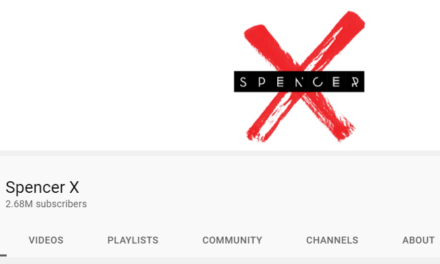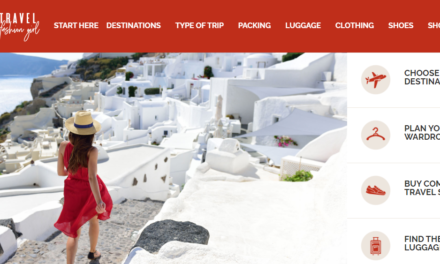
NOVEMBER 1, 2024
5 things to do
Give Them Proof
If you have an audience, you have the social proof to grow that audience.
You could promote your audience size to indicate you’re a credible content business. But why not involve the very people in your audience? Get them to provide testimonials.
It will have a bigger effect on the growth of your audience and, even more importantly, customers. Research has found:
- 72% of customers say positive testimonials and reviews increase their trust in a business.
- 70% of people trust reviews and recommendations from strangers.
- 88% of consumers trust online testimonials and reviews as much as recommendations from friends and family.
Dawna Jarvis, a public relations and business strategy expert, says testimonials act as a bridge of trust – real people vouching for the value of credibility.
So, get started with these five things to do to get and incorporate testimonials in your content business:
1. Ask for help: “Be shameless when asking your audience for testimonials. Don’t assume they will do it on their own. Be vulnerable. Let them know how it helps you and your business,” says Jordan McAuley, founder of Contact Any Celebrity.
Dawna secures testimonials after she wraps up a project. “Timing is everything,” she says. “I usually send over a simple online form or a few easy questions. It’s not just about making it easy for them, but it’s also a great way to get those genuine, in-depth responses.”
Jordan says you shouldn’t make the testimonial request all about you. “When I ask customers for a testimonial, I tell them, ‘Feel free to plug your project.’”
“In my experience, the reality is most people will write a testimonial because they want to be helpful but don’t usually plug anything. So you end up getting a great testimonial anyway,” he says.
Just like successful content entrepreneurs publish consistently, you should regularly seek testimonials, Dawna notes.
“In the world of content creation, social proof is key,” she says. “Testimonials are a form of social proof that can boost your reputation and authority in your niche.”
2. Convert unsolicited feedback: Sometimes, a testimonial manifests itself without your request. Jordan says when a customer sends a compliment, you could respond with “Thanks for the kind words. We would love it if you could post a quick review here” and include a link to your Google reviews page.
Your audience may say good things about you and your business but don’t send the compliments directly to you. That’s why Jordan recommends setting up Google alerts for your brand and doing a Google search once a month to see if audience members are posting positive reviews but haven’t shared them with you.
3. Make it simple: Jennifer Galbraith, president of Alestra Marketing, offers this handy list of questions to ask when seeking a testimonial:
- What was your absolute biggest challenge before purchasing/joining/attending?
- How did that challenge make you feel?
- What changed after purchasing/joining/attending?
- What specific results can you share?
4. Feature the testimonials: Use testimonials on your website, social media, print materials, book cover, and advertisements. Turn your best testimonials into images or videos to run as ads on Facebook and Instagram, says Jordan.
Dawna suggests writing testimonials as mini-stories. Let people see a bit of themselves in the experience. “Aim for testimonials that tug at the heartstrings because we’re all drawn to emotions and real-life stories,” Dawna says.
Scott Lieberman, founder of Touchdown Money, publishes video testimonials on YouTube and text versions on Reddit.
“The key here is the testimonial is focused on how the person solved their problem using a new mechanism – which happens to be what you’re selling – be it a course, product, or service,” he says.
Dawna notes that podcast segments and newsletter highlights are other places to insert testimonials.
5. Use testimonials as feedback: Testimonials also can help you refine and improve their offerings to align with their audience’s evolving needs, Dawna says.
“You’d be surprised how much valuable feedback comes from just asking my audience how my content’s impacting them,” she says.
Another benefit of testimonials? They can attract brand partners. Scott explains, “Sponsors like to be aligned with high-quality businesses. They want the halo effect of partnering with a respected content creator. Testimonials add to your credibility.”
– Ann Gynn
tilt publishing book club
- Congrats to Tilt author … Alexandra Howson PhD released her new book this week, WriteCME Roadmap: How to Thrive in Continuing Medical Education With No Experience, No Network and No Clue. Isn’t that a great title?
- Swift decision … Did you see the news? Taylor Swift opted for self-publishing over traditional publishing for her book(s). Once again, Taylor makes a smart business move. [Salon]
- Creator magic … Fascinating read on the creator-author boom, including how book publishers work with creators. [Publish Press]
- More than words … We agree with author Ana Huang, who says self-publishing is like running a small business. [Business Insider]
- Pulling together … Manage your presales, crowdfunding, and book launch. [Lulu]
5 things to know
Money
-
Lead up: LinkedIn now lets you generate leads from organic posts on your LinkedIn page. Similar to ads, you set the budget, target, and objective, but now you can create a lead form template, too. [LinkedIn]
Tilt Take: Helpful paid tool for entrepreneurs whose audiences are on LinkedIn (and that number is likely growing). -
Vella down: Amazon says it will shut down Kindle Vella in February. The program lets creators earn royalties on stories published one short episode at a time. Readers could consume the first episodes for free and then purchase tokens to read more. [PC Mag]
Tilt Take: Yet, another example of relying on a third-party payment system isn’t necessarily a long-term revenue stream. The platform is always in control.
Audiences
-
Buy in: New research from the Podcast Pulse report finds 94% of niche podcast listeners say they’ve responded to an ad they’ve heard. That’s slightly higher than all podcast listeners (88%). [Podcast News Daily]
Tilt Take: Helpful data to add to your podcast media kit to attract advertisers.
Tech and Tools
-
Meta twins: Meta released its version of Google’s NotebookLM, which lets creators generate a podcast based on text. [Tech Crunch]
Tilt Take: We haven’t tested it out, but repurposing content is usually a smart move (just listen to it before you publish publicly).
And Finally
-
Easier comments: YouTube renamed the Comments tab to Community. It will also add Community Spotlight, a feature that allows creators to see their most engaged viewers more easily and respond to their comments. [Social Media Today]
Tilt Take: Strengthening the connection with top fans is critical to a vibrant content business.
5 things from the tilt
- Tilt Your Business podcast at its new time – 4:30 p.m. US ET Tuesdays. Join Ann and Michelle to talk about how to grow your content business.
- Resistance is all around us, stopping us from creating great things. But one thing can stop the resistance. (Content Inc.)
- Joe and Robert discuss the big opportunity for creators to go local. (This Old Marketing)
- Join Matt and Lauren for a special Ask Us Anything episode, where they take listener questions about publishing, marketing, Lulu products, and – of course – Disney. (Publish & Prosper)
- ICYMI: 10+ Books Content Business Owners Should Read
Get more of the Full Tilt stories on TheTilt.com.
Know a content creator who’s going full tilt? DM us or email [email protected].
Want to advertise on The Tilt? Go here.
Or email us at [email protected].
Was this email forwarded to you? Get your own sub here.
Copyright ©2024 Lulu Press, Inc. All rights reserved.
Update your preferences | Unsubscribe | PO Box 12018, Durham, NC 27709





